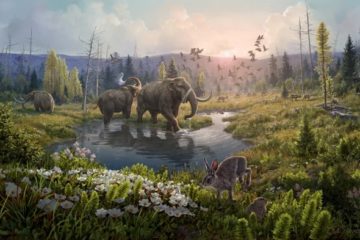Stephanie Pappas in Scientific American:
 The oldest DNA ever recovered has revealed a remarkable two-million-year-old ecosystem in Greenland, including the presence of an unlikely explorer: the mastodon.
The oldest DNA ever recovered has revealed a remarkable two-million-year-old ecosystem in Greenland, including the presence of an unlikely explorer: the mastodon.
The DNA, found locked in sediments in a region called Peary Land at the farthest northern reaches of Greenland, shows what life was like in a much warmer period in Earth’s history. The landscape, which is now a harsh polar desert, once hosted trees, caribou and mastodons. Some of the plants and animals that thrived there are now found in Arctic environments, while others are now only found in more temperate boreal forests. “What we see is an ecosystem with no modern analogue,” says Eske Willerslev, an evolutionary geneticist at the University of Cambridge and senior author of the study, which was published in Nature.
Until now, the oldest DNA ever recovered came from a million-year-old mammoth tooth. The oldest DNA ever found in the environment—rather than in a fossil specimen—was also a million years old and came from marine sediments in Antarctica. The newly analyzed ancient DNA comes from a fossil-rich rock formation in Peary Land called Kap København, which preserves sediments from both land and a shallow ocean-side estuary. The formation, which geologists had previously dated to around two million years in age, has already yielded a trove of plant and insect fossils but almost no sign of mammals. The DNA analysis now reveals 102 different genera of plants, including 24 that have never been found fossilized in the formation, and nine animals, including horseshoe crabs, hares, geese and mastodons. That was “mind-blowing,” Willerslev says, because no one thought mastodons ranged that far north.
More here.
